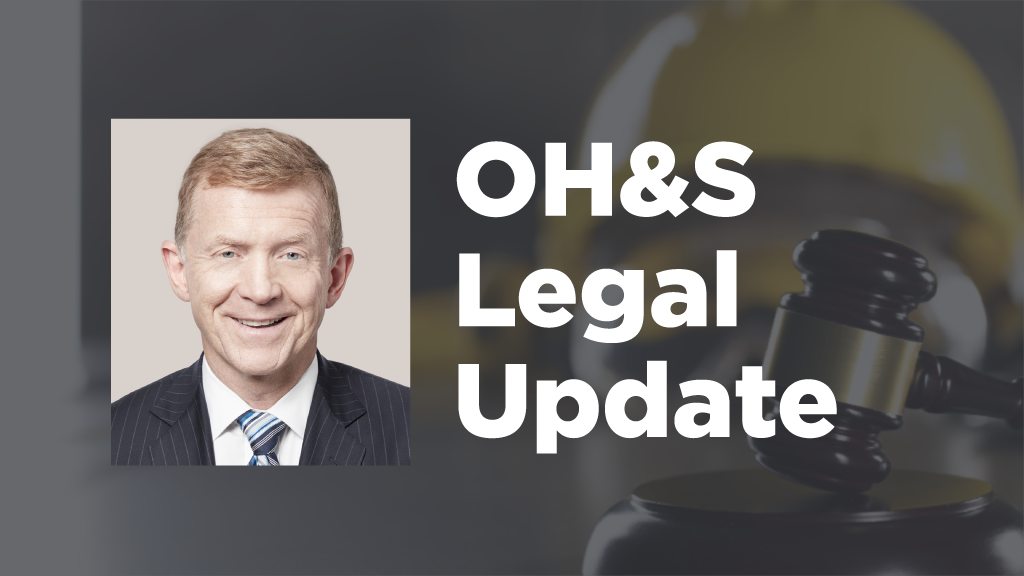Effective July 1, the Ministry of Labour, Immigration, Training and Skills Development (MLITSD) now has two years to investigate and prosecute construction companies, their directors, officers, supervisors and employees for alleged contraventions of the Occupational Health and Safety Act (OHSA) and the Regulations for Construction Projects.
This change was part of a broad set of labour law amendments that passed before the recent provincial election that are now in effect in Ontario. Bill 88 also increased fines dramatically and gave direction to courts on aggravating factors in assessing financial penalties during sentencing and after a conviction has been registered.
Let’s look a little closer at the limitation period extension and construction sector implications.
The new limitation period permits MLITSD inspectors to take up to two years or 730 days to investigate and lay charges arising from workplace incidents, accidents and fatalities in the construction industry. This will mean that constructions companies, directors, officers, supervisors and workers, who all have statutory duties under Part III of the OHSA will be at risk of being charged for up to two years.
Unions have no accountability under the OHSA.
There are at least three concerns for the construction industry arising from the consequence.
First, it means construction industry stakeholders will need to investigate incidents investigated by the MLITSD inspectors and preserve due diligence evidence as soon as possible.
Since memories fade with time, since projects finish and safety records may get stored and lost, and since workers may move on to other projects in other jurisdictions, preserving all privileged investigation and due diligence evidence is critical.
Second, it means pre-qualification safety checks and initiatives will become less effective. This will impact general contractors, project managers and OGCA members more significantly than subtrades.
For example, if the MLITSD has investigated but not yet charged a subtrade with an offence under the OHSA, the possibility of charges is not something that gets asked or picked up in most pre-qualification questionnaires or third-party pre-qualification system software. An otherwise disqualified subtrade may slip between the pre-qualification cracks.
This may diminish the effectiveness of pre-qualification safety checks and initiatives.
Third, the longer the period of uncertainty for supervisors, superintendents and project managers about whether they will be charged with serious OHSA charges, the greater the stress that puts on these individuals personally.
Recruitment and retention of supervisory staff has been challenging even during the pandemic. This change will not help and may make recruitment and retention more difficult for construction companies.
Another interesting aspect of this legal change is the fact the MLITSD already had the ability to extend the limitation period beyond 12 months in the circumstances of a continuing offence or if they did not get notification of a contravention. This change in the law took place in 2017.
The wording of the limitation period provision in the OHSA reads as follows: “No prosecution under this act or the regulations shall be instituted more than two years after the later of, (a) the occurrence of the last act or default upon which the prosecution is based; or (b) the day upon which an inspector becomes aware of the alleged offence.”
Therefore, the extension from one to two years was, with respect, not needed to deal with unreported incident situations or ongoing contraventions that extend longer than a year, since they were already addressed.
The two-year limitation simply allows the MLITSD investigators and prosecutors to take more time to decide if they want to lay charges.
Practically speaking, it remains to be seen if the MLITSD will often use the full two years to lay charges. However, current practice up to June 30, 2022, in the writer’s experience, saw the majority of charges being issued in the last 30 days of the one-year limitation period, sometimes even the last week or days.
Contractors are well advised to take the following steps to address the new two-year limitation period to protect themselves, and their directors, officers, supervisors and workers from being unprepared to properly answer and defend OHSA charges if they are served with charges up to two years after an incident:
- Retain legal counsel immediately if there is a critical injury or worse on the project;
- co-operate with MLITSD investigators but self-advise on how to avoid self-incrimination during the government investigation;
- have legal counsel review your section 51 report before it is sent to the MLITSD investigator to avoid self-incrimination;
- review all MLITSD orders issued on field visit reports to assess their accuracy, validity and legal implications;
- get legal advice on whether to exercise the right to appeal orders with which you disagree (you only have 30 days to commence an appeal);
- conduct a parallel, privileged investigation to the MLITSD investigation, under the guidance of legal counsel;
- collect all relevant contract documents, safety policies, tool box talks, JHSC meeting minutes, safety training records, safety warnings and personnel files of those involved in the incident;
- have legal counsel conduct privileged interviews of all relevant witnesses to guard against fading memories;
- work with your legal counsel to develop a cogent theory of causation of the incident and take remedial steps to avoid a reoccurrence; and
- reserve all evidence gathered in your privileged investigation and obtain legal advice to guard against waiving privilege.
For further information on how to respond to a workplace critical injury or fatality, feel free to contact the author directly at KPMG Law LLP: nkeith@kpmg.ca or 416-540-3435. You can also send OH&S Legal Update column ideas or comments to editor@dailycommercialnews.com











Recent Comments